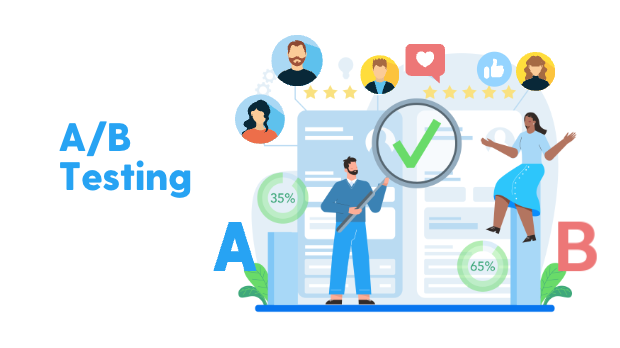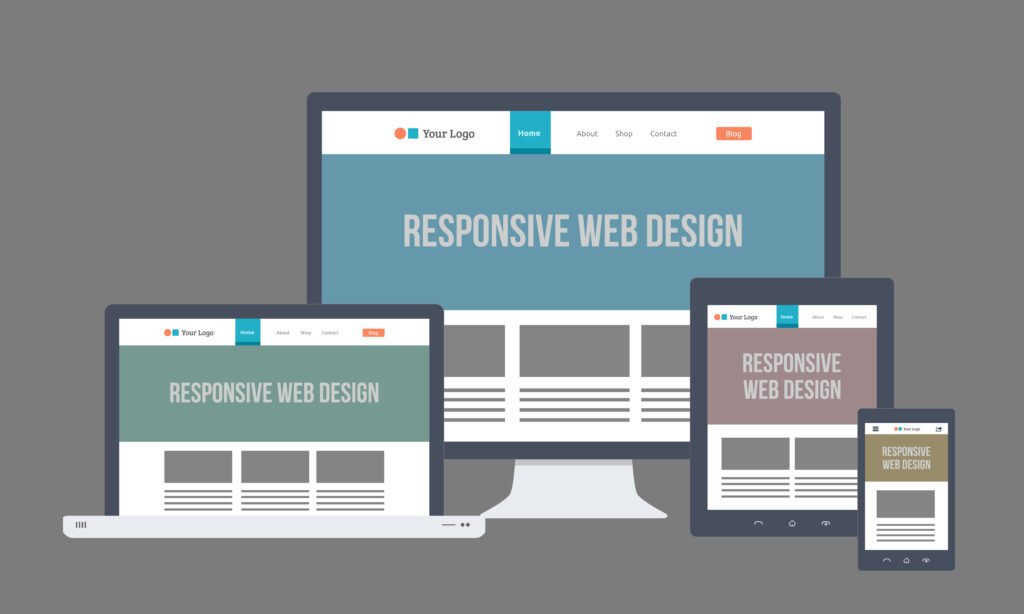A/B testing, also known as split testing, is a powerful method for improving website performance by comparing two or more versions of a webpage or element to determine which performs better based on a specific objective. The goal is to optimize user experience, increase conversion rates, and ensure your website aligns with user preferences and business goals.
What is A/B Testing?
A/B testing involves creating two variations (A and B) of a webpage or specific elements, such as call-to-action buttons, headlines, or layouts. The audience is randomly divided into two groups, each seeing a different version of the element or page. Performance data is collected to identify which variation results in better outcomes.
For example:
- Version A: The original webpage or element.
- Version B: The modified version with changes such as a new headline, button color, or layout.
Why A/B Testing Matters for Website Optimization
A/B testing provides data-driven insights into how users interact with your website. It eliminates the guesswork from optimization efforts, allowing you to make informed decisions based on real user behavior. This method is especially useful for improving key performance indicators (KPIs), such as conversion rates, bounce rates, and time on page.
Benefits of A/B Testing:
- Data-Driven Decisions: A/B testing helps you make decisions backed by data, reducing the risk of implementing changes that might negatively impact your website’s performance.
- Improved Conversion Rates: Testing variations can lead to improved call-to-action responses, more sign-ups, and better product purchases.
- Reduced Bounce Rate: By testing different page elements, you can create a more engaging experience, which can reduce bounce rates and keep visitors on your site longer.
- Better User Experience (UX): You can optimize the user journey by testing different design and content elements, making your website easier to navigate and more enjoyable to use.
- Increased Revenue: Improved conversion rates and enhanced user experience directly contribute to higher sales or more leads.
Steps for A/B Testing
To perform A/B testing effectively, follow these steps:
1. Identify Your Objective
Before starting the test, define your goal. What do you want to improve? Common A/B testing goals include:
- Increase sign-ups
- Boost product sales
- Improve click-through rates on CTAs
- Decrease cart abandonment
2. Determine What to Test
Focus on testing one variable at a time to avoid confusion and achieve clear results. Elements you can test include:
- Headlines: Test different versions of your headlines to see which one grabs more attention.
- Call-to-Action (CTA): Test different colors, sizes, or placement of your CTAs.
- Images: See how different images affect user engagement.
- Forms: Try out variations in form length or the information requested.
- Page Layouts: Experiment with different layout structures to see which one is more user-friendly.
3. Create Variations
Once you’ve chosen what to test, create the alternate version (Version B) that modifies the original (Version A). Make sure only the specific variable you want to test is changed.
4. Run the Test
Use an A/B testing tool such as Google Optimize, Optimizely, or VWO to run your test. These tools split your traffic evenly between Version A and Version B and collect data on how users interact with each version.
5. Analyze the Results
After running the test for a sufficient period, analyze the results to determine which version performed better. Focus on your key metrics—conversion rates, engagement, or any other objective you set initially. Make sure the results are statistically significant to avoid false positives or negatives.
6. Implement the Winning Version
Once you’ve identified the better-performing version, implement it on your website as the default. Continuously monitor performance to ensure the changes are having the desired impact.
A/B Testing Best Practices
- Test One Variable at a Time: To avoid confusion, only test one element at a time. This makes it easier to determine which change affected the performance.
- Run the Test Long Enough: Run the test for an appropriate amount of time and with enough users to ensure statistical significance. Short tests may produce unreliable results.
- Segment Your Audience: Different user segments (e.g., mobile users vs. desktop users) may behave differently. Running A/B tests for different segments can give more accurate insights.
- Focus on High-Traffic Pages: For quick and effective results, start A/B testing on pages with high traffic. These pages will give you the data you need faster and impact the majority of your audience.
- Use Clear Metrics: Be specific about the metrics you are measuring, such as conversion rates, average session duration, or bounce rates. This clarity helps in evaluating the success of the test.
A/B Testing Tools
There are several popular tools that can help you conduct A/B testing:
- Google Optimize: A free tool from Google that integrates with Google Analytics for running A/B tests on your site.
- Optimizely: A powerful A/B testing tool that offers advanced targeting and experimentation features.
- VWO (Visual Website Optimizer): A comprehensive testing platform that allows you to run A/B, split, and multivariate tests.
- Unbounce: A landing page builder with built-in A/B testing capabilities for optimizing landing pages.
- Crazy Egg: A tool that provides heatmaps and A/B testing features to understand user behavior better.
Conclusion
A/B testing is an invaluable strategy for website optimization, allowing businesses to make informed, data-driven decisions. By testing different versions of webpage elements and analyzing user behavior, you can improve conversion rates, boost engagement, and enhance user experience. When executed correctly, A/B testing leads to continuous improvements that directly impact your website’s success.
At Techstertech.com, we offer professional web development and optimization services, including A/B testing strategies to help you get the most out of your website. Contact us today to start optimizing your website for better performance and conversions!



